Account-based marketing tactics are all about personalized marketing at its finest.
Account-based marketing (AMB) allows sales reps to target individual businesses as prospective prospects. They’ll create custom outreach, marketing, and messaging campaigns exclusively for key decision-makers working for those companies with the goal of delivering incredibly relevant materials that drive a sale.
Account-based marketing tactics, therefore, are highly focused on a granular level, prioritizing fishing in the right spot over just casting a wide net. And while many sales teams do also have campaigns in place to cast that wide net, increasingly SDRs are incorporating more AMB tactics into their strategies.
In this post, we’re going to look at 11 effective account-based marketing tactics that can help you land those high-value clients you love.
1. Use LinkedIn’s Social Data to Your Benefit
Social media sites are rich with data, and LinkedIn is particularly valuable for B2B sales teams. This is a powerful account-based marketing tactic that can help you connect with your target audience.
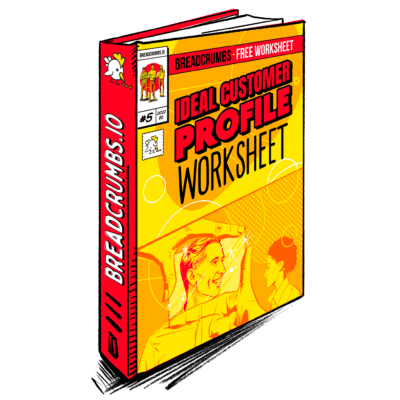
Ebook
Ideal Customer Profile (ICP) Worksheet
Learn how to create an Ideal Customer Profile and build a successful sales strategy with this Ideal Customer Profile (ICP) Worksheet.
LinkedIn is a potential powerhouse for account-based marketing, because you can easily build up a list of contacts of individual decision-makers for individual businesses quickly. All you need to do is a quick search, a click to the company Page, and a review of its current employees.
You can leverage LinkedIn to find decision-makers and view their individual profiles. Depending on their privacy settings, you might be able to see posts they’ve interacted with or content they’ve shared. You may be able to discover pain points or additional information about company culture that you can use to tailor pitches for this business.
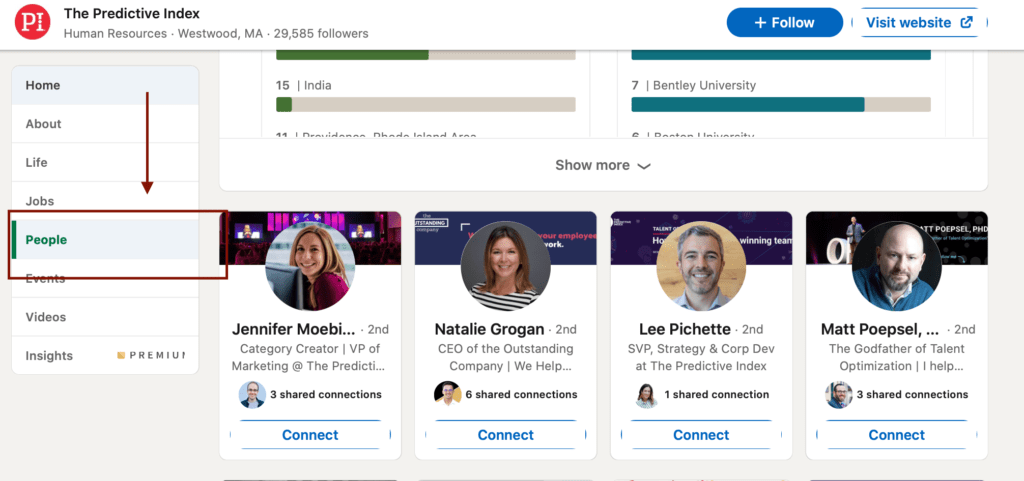
You can then either reach out directly or leverage LinkedIn outreach automation to find contacts’ email addresses on LinkedIn.
And if you want to go for another approach that isn’t quite cold calling, you can consider personalized, branded campaigns through LinkedIn Ads, which brings us to tactic number two…
2. Use LinkedIn Ads Company Targeting
When it comes to quality B2B PPC platforms, LinkedIn Ads is right at the top. The ability to target based on company size is excellent for cold outreach to try to identify new potential clients who are interested, but you can also target users at specific companies and who have specific job titles.
If, for example, you wanted to target upper-level financial executives at Microsoft, you can do so.
In audience targeting while creating your campaign, limit the company to Microsoft and then add relevant job titles that decision-makers would hold. Additionally, utilizing a tool for LinkedIn scraping can enhance your precision in identifying and reaching out to the right audience for your B2B campaigns.
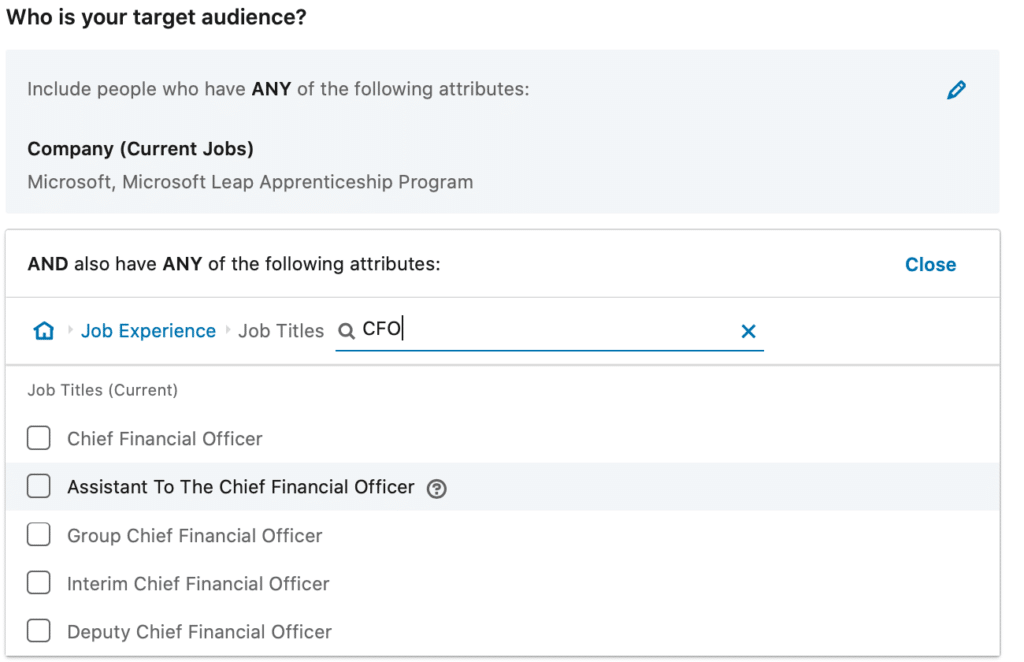
You can then create personalized ads ads that take factors like their unique company culture, potential pain points that have been discussed, and even quotes from one of their team members into account. It’s a chance to speak directly to the client without them even realizing you are.
3. Utilize Cross-Platform Social Listening & Engagement
We’ve already mentioned the value of checking out what prospects are saying above, but you can take this a step further and take a cross-platform approach with intentional social listening. All account-based marketing tactics rely on understanding your audience; this is a good step in the right direction.
Social listening is the practice of monitoring social media conversations about their brand, products, or even certain keywords.
Start by finding potential target decision-makers on public social accounts. Twitter (also known as “X”) is a popular choice, as it’s visible, and a large number of people have public profiles. Follow them and see what they have to say. Over time, you can observe challenges and pain points, and you can start to nurture a relationship by liking and sharing their content, ideally a significant time before asking for the sale if possible.
To make this easier, your sales team can create lists on Twitter of usernames for each target account. You can quickly review each list to look for commonalities.
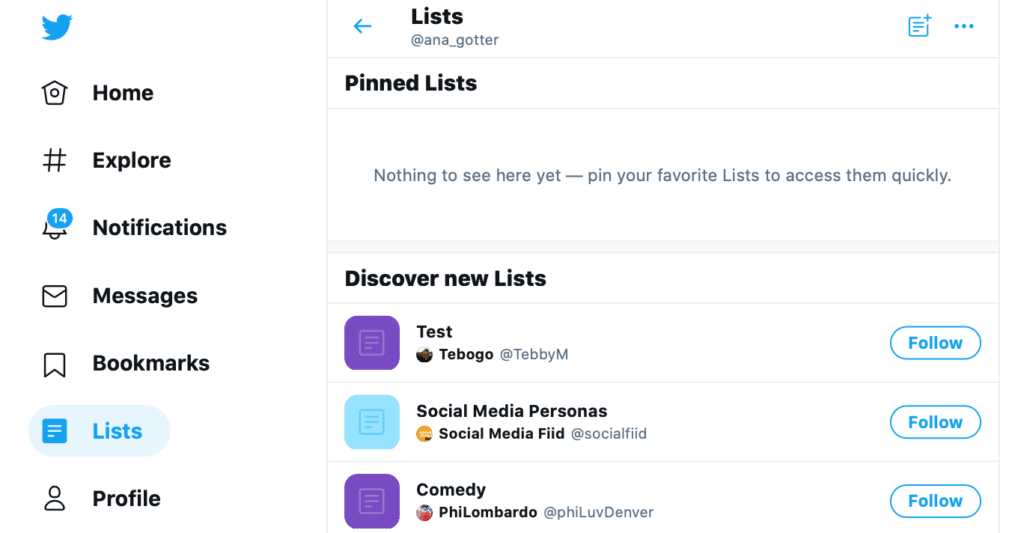
Even better, you can then create content that’s most similar to what they’re sharing. If you want to reach a certain client and see that they post a ton of short 30-second tutorial videos, you should create similar content that’s targeted towards them. This can increase your rapport and credibility right off the bat.
4. Create Custom Pitch Decks for Each Client
Plenty of businesses will create a single pitch deck and use it for most clients who come this way. When you’re trying to reach clients across a number of different fields for set lists of products and services at a set price, that can work fine.
For account-based marketing, however, it puts you at a disadvantage.
If your sales team has taken all this time to learn about the business, their key decision-makers, and their unique pain points and challenges, it all goes to waste if it’s not addressed immediately in the pitch deck. If you can’t prove that you have something immediately relevant to them there, you’ll lose them.
If I had software that allowed businesses to make it easier to upload blog posts to a CMS, and I wanted to showcase its effectiveness, I wouldn’t just use a hypothetical example of “the average blog post contains six links and is 1500 words.” Instead, I’d pull up one of their blog posts in the presentation, discuss how many links, how much metadata, and how many images need to be imported and how much time would be saved for that individual post.
In your pitch deck, highlight specific services, products, deals, and use cases that you believe–based on research—the individual business may want to see most.
5. Create Account-Specific Offers
Account-based marketing prioritizes direct marketing to individual businesses, so it only makes sense that you’d create account-specific offers for each potential client.
“Enterprise-grade” can mean so many different things. For some businesses, it means relatively newer corporations with a few hundred employees; it can also mean international Fortune 500 companies with tens of thousands of internal team members alone.
If you’ve got a chance at a mega high-value client, it makes sense that you may be willing to give a little more to win them over. Offering to add on an additional feature to the standard service package can be a win-win for you and the client, even if you wouldn’t be open to doing it for just anyone.
Finding what will sweeten the deal for each individual account can be left in the hands of your sales team, who can work with the marketing team to fine-tune the messaging and even distribute the offers to relevant team members with remarketing and email campaigns.
6. Use Lead Scoring to Determine Which Accounts to Pursue
For those who aren’t yet familiar, lead scoring is the practice of creating an objective scale that allows you to rank leads to assess their potential value to your business.
Lead scoring can identify leads who are most likely to convert fast, convert at a high value, or retain longer (or a combination of the three!). It may also help you identify potential cross-selling and upselling opportunities with existing clients, but that’s a whole different topic.
Breadcrumbs is a ground-breaking lead scoring tool that was created to provide accurate, actionable looks into lead potential based on their firmographic data and their activity— and when and how often a prospect’s actions were taken.

Each contact will receive an individual score, and you’ll be able to see which factors raise or decrease a contact’s score.
And those scores aren’t static—if a prospect signed up for your email list, for example, they may gain ten points. But after two weeks go by, those ten points may decrease to seven. While that recency score is decreasing for that one particular action, other actions—like opening emails or booking demos—can raise their points.
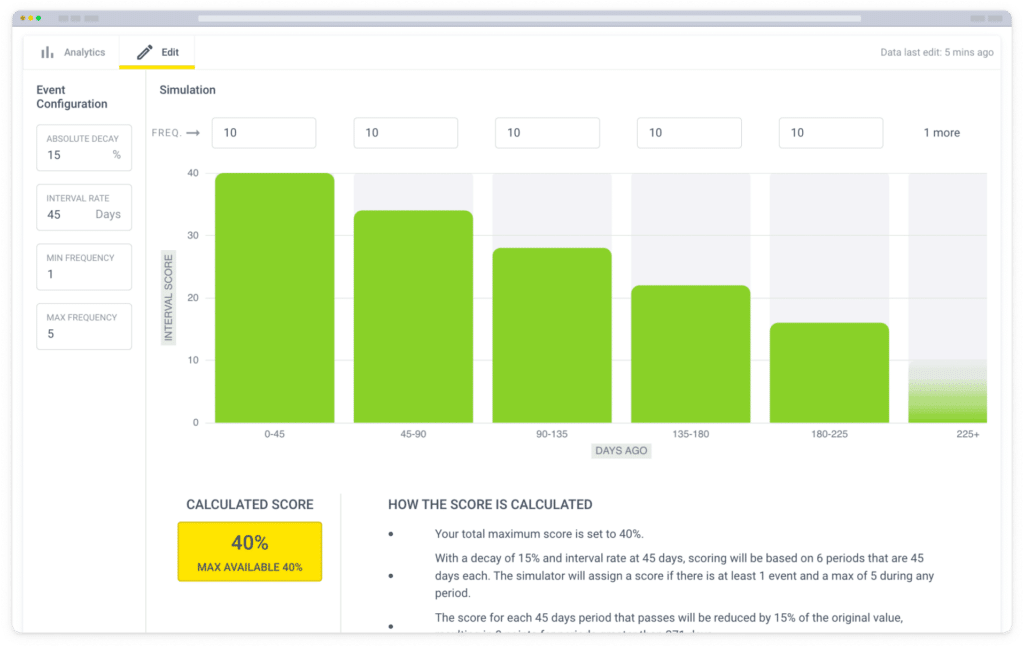
Lead scoring with Breadcrubs is flexible and customizable. We can suggest contact scoring models based on the data you sync from your CRM tools, but you can also create your own templates from scratch or customize the ones we provide for you. You can even split-test different models to determine which ranking factors best indicate high-value opportunities.
And when it comes to AMB, this is invaluable. You’ll be able to see which potential prospects are most valuable so you can act right away with dedicated and intensive AMB campaigns. You can also track your AMB sales outreach effects through lead scoring, getting a good idea of who is in the pipeline and how engaged they are.
7. Set Up Offers That Drive Meetings and Direct Contact
Not all lead magnets are created equal, and focusing on offers that allow you to get your foot in the door can be a game-changer for account-based marketing. This is the tactic that really puts you in touch with potential warm leads.
Lead magnets are already a great start because they offer value while opening the door for communication. They might include an ebook, a whitepaper, or a template to help potential clients accomplish something like writing their own ad copy. If you’re able to create a resource people need, they’ll be happy to fill out a form and share their name, email, company name, and industry.
Personalized, non-sales offers that drive meetings are also a good choice. Free personalized demos, free consultation calls, and free first appointments are all a great start.
In your initial outreach, though, just be specific about why this offer can help them. You can explain a bit about how you’ll get the promised results, and offer to explain more or to go into more detail during a free call.
8. Take Advantage of Remarketing Campaigns
Remarketing (also sometimes called “retargeting) involves reaching out to users who have interacted with your business in some way. It’s a common account-based marketing tactic.
Remarketing often includes using pay-per-click ad platforms like Google Ads, Facebook Ads, and LinkedIn Ads to show middle-of-the-funnel campaigns to users who have interacted with an ad, an offer, a site page, or a lead form in the past.
If you have leads who get in touch but drop off, or someone who views your landing page but didn’t actually fill it out, remarketing campaigns can keep you relevant. You can stay connected at a relatively low cost-per-impression rate, especially if you’re using LinkedIn’s audience targeting refined features.
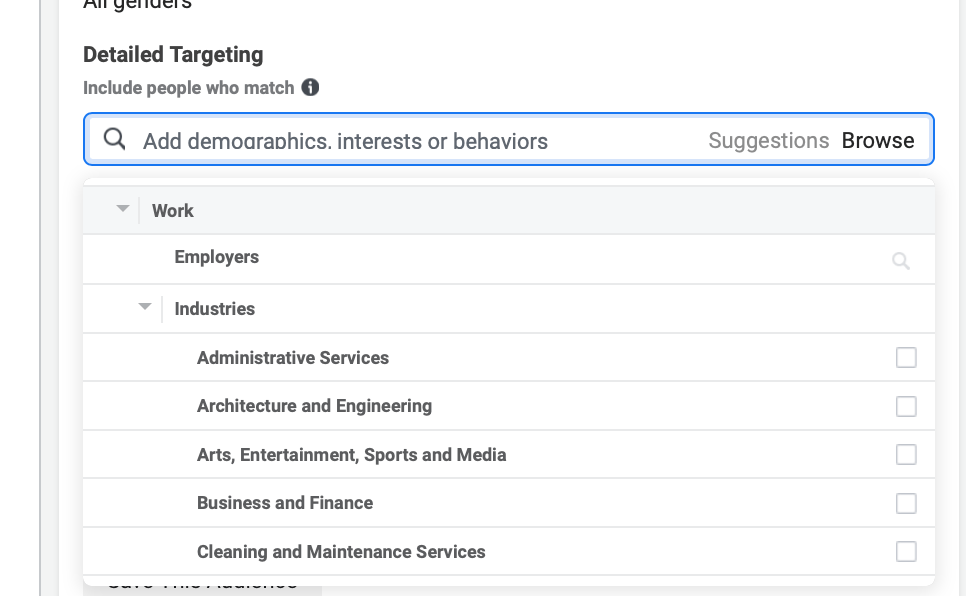
You can also limit custom audiences and retargeting campaigns on Facebook Ads, too, limiting your ad to be shown to users who work in certain industries like “tech” or “business.” This can help you serve your campaigns to relevant leads that you’re more likely to want to follow up with.
9. Personalize Prospects’ On-Site Experiences
Imagine being able to not only show users nearly-customized-for-them ads but also being able to adjust their on-site experience. Believe it or not, you can… and it’s a great account-based marketing tactic.
Test out landing pages with custom images, copy, offers, everything for different users who come to your site.
You can use the following data to create landing page personalization, adjusting what the user sees based on the following:
- Behavioral data: This would be your target’s activity, like how a prospect behaves while on your app or website.
- Contextual data: Things like which browser was used, the type of device, and its location.
- Firmographics: Your target’s company name, industry, revenue, or stage in the buying cycle.
- Demographics: Such as name, email address, work title, and location.
You can learn more about how this works here, but the idea is that this can ideally automate some of your sales team members’ work for them, especially since they can’t reach out through a screen every time a potential client views your site.
10. Sending Personalized Gifts
Well-thought-out and (appropriate) personalized gifts never hurt a sales team’s efforts. Whether you’re working with a single decision-maker or a team, you can pick up on a lot during your interactions to come up with custom-for-them gifts that will mean a great deal.
One of my clients once mentioned loving wine tasting, so when he helped me land a major contract I sent a gift certificate to an online wine-tasting subscription as a thank you.

When you’re working with a team of decision-makers, you can also send gifts like elaborate fruit baskets. And if you want to add a branded touch without sending swag that they’ll probably never wear, look into businesses like Cookies By Design, which lets you send baked goods with your logo design on them. It’s branded to keep you relevant, but it definitely won’t go right in the trash.
11. Track Changes with Key Players
If you’re working with account-based marketing, there’s a good chance that you’re at least familiar with sales prospecting software. Many of these tools can help you discover and potentially reach out to potential prospects, allowing you to search by company or industry.
Some of these platforms also offer sales intelligence features. They allow you to set alerts to monitor a potential prospect. You can set alerts for different sales triggers—like a key stakeholder leaving their existing role.
Here are a few examples of how a key stakeholder employment change could present a sales opportunity:
- That key stakeholder may have been one of out several that was blocking the deal. With them out of the way, your sales team can swoop back in and make a sale.
- The key stakeholder in question loved your product or service but didn’t have the budget. You see that their new employer, however, is much larger and likely has the budget.
- That individual loved your product, but their team didn’t. That may not longer be an issue.
- The individual wanted to work with you, but there was a logistical issue like your product didn’t integrate with their outdated tech stack. You can see, however, that the new company does integrate with your product—time for a sale!
Sales triggers may include job change alerts, companies scaling up or down, or businesses receiving funding.
Some tools that can help with this may include Cognism and LinkedIn Sales Navigator.
Account-Based Marketing Tactics: Final Thoughts
Account-based marketing tactics can be intensive, and they definitely require a more significant time investment than if you’re just trying to cast a wide net for clients that fit into a specific industry or audience segment.
That being said, the extra effort can absolutely be worth it, especially when you’re working with high-value clients that make your business’s world go ’round. Remember to think outside the box, prioritizing ways to discover, research, and connect meaningfully with potential leads at every stage of the lead generation and sales process.
Want to take advantage of improved lead scoring and ranking to better identify prospects for account-based marketing? Book your free demo of Breadcrumbs here!



